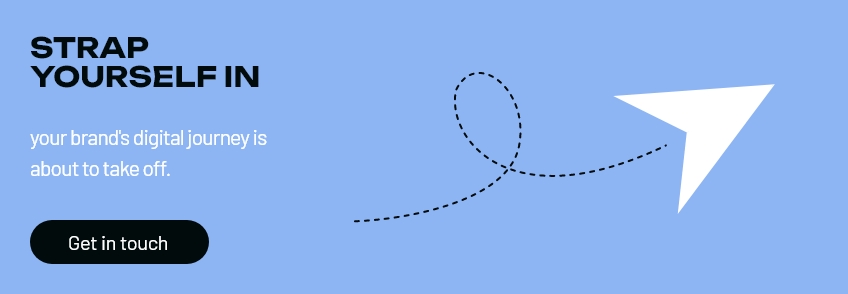Social media ads continue to be a large revenue driver for many businesses, and with digital marketers cementing their digital marketing goals and plans for the year, our Paid Social team have provided their expert insight and knowledge into the biggest Paid Social trends for 2025. From social ecommerce, the creator economy, to the use of AI, here are our top predictions.
Social Search
Gen Z are no longer ‘Googling it’ with 40% of Gen Z now relying on social media for search, a shift away from traditional search engines. Younger audiences are turning to TikTok, Instagram and YouTube throughout their buying journey. This is not only true when they are researching products, but planning their holidays, decorating their home and making bigger life decisions.
Social search has many benefits, firstly, short form video is much easier to digest and far more engaging than a hefty blog article. Secondly, Gen Z are craving authenticity. Gen Z don’t part with their cash easily, which is why finding authentic reviews and the real experiences of others plays a large role in their customer journey.
How can brands authentically ensure that their content is optimised for social search? Ensure that captions, descriptions and hashtags are all added. We would also recommend reviewing the content that appears for your phrase or keywords in the social search results when creating your content to see how you can gain competitive advantage with better content, and answer the questions that others are asking in the comments of other videos.

Short Form Video (UGC)
Short-form videos on platforms like TikTok and Instagram are taking over social media, and for good reason. These quick, bite-sized videos are effective at capturing attention in ways that long-form content often can’t, making them perfect for reaching potential customers. The key is to stop the endless scroll and earn that precious moment of engagement.
How can you make the most of short-form video in 2025? To make the most of short-form video, aim to keep your videos under 15 seconds. This length ensures your message is delivered quickly, catering to the declining attention span of modern audiences. Begin with a strong hook—a compelling opening that encourages users to stop scrolling and pay attention. Once you have their attention, deliver your key message clearly and effectively, avoiding any unnecessary details.
User-generated content is another powerful tool to increase engagement. It helps make the brand feel more authentic and relatable, which can bridge the gap between the brand and the audience. UGC style content shows real people interacting with your product, making it more trustworthy and appealing. Using captions and text overlays in videos is crucial for viewers watching on the go, ensuring your message is still understood even without sound.
Incorporating these strategies into your short-form video content can help boost engagement, attract new audiences, and ultimately, enhance your brand presence on social platforms.
Rise Of EGC Creators
From behind-the-scenes glimpses to inspiring success stories, businesses across industries are tapping into employee creativity to bring their stories to life. Platforms like YouTube, TikTok, and LinkedIn have become powerful stages for showcasing the inner workings of companies, offering authentic insights that engage and inspire audiences. So why is EGC becoming so important to your business strategy?
Builds authenticity
EGC is a powerful tool for building brand authenticity and connecting with your audience. By humanising your business through insider content and putting a relatable face to your brand, you can create deeper, more genuine connections. Fashion brands like Odd Muse and tech giants like Adobe already leverage TikTok to showcase their authentic side with fun content, behind-the-scenes insights, and inspirational stories.
Cost Effective
Leveraging employees to share their experiences from their unique perspectives not only adds authenticity but also provides a cost-effective way to create fresh and engaging content.
Attracting Talent
One major advantage of EGC is its ability to attract top talent by creating a compelling “FOMO” factor that draws people in. According to a recent Resume Builder survey, 41% of Gen Z professionals have made career decisions influenced by TikTok, highlighting the platform’s growing role in shaping workplace perceptions and opportunities.
Employee-Generated Content is transforming the way businesses connect with audiences by showcasing the creativity and unique perspectives of employees on platforms like TikTok, YouTube, and LinkedIn. Companies can humanise their brand, inspire trust, and build deeper connections.

AI Filling The Gaps In Customer Experience
Outside of the recent growth in AI generated content appearing in ads, user’s posts, and even university projects – there is an evolution happening right alongside this in the marketing space which may not look as glamorous and creative as what we have been seeing, but stands to make a big difference in the way we work.
One of the new ways we are seeing AI integrating into our work is through chatbots, more specifically, messaging chatbots on ad platforms. Using Meta as an example, the messenger chatbot has always been a manually tailored experience for marketers and, as a result, ran the risk of losing traction if a question was asked that wasn’t pre-determined. Now, with AI generated messenger chat bots, which are currently in development at Meta, these risks are not only dampened but it also helps us bypass any need for users to leave the platform for external research which, in turn, ups retention and CVR trends.
With AI, we can shorten the customer journey and compact discovery through to purchase, removing consideration and external research. Some of our clients have already expressed interest as these tools pose to answer difficult questions or pain points in a platform that sometimes can only be answered by going off to google and researching the company/product. The usage of these tools is very conceptual at the moment but we are excited to see how the applications help develop the digital marketing space for both customers and companies.
Consumers vs AI Content
AI has been a buzzword the past few years and the rapid development of image and video generation has seen several brands adopt AI to make content. One of the most known examples of this was the Coca-Cola Christmas ad last year. Completely generated by AI, the ad faced backlash for using AI to produce the content.
Despite the backlash, more companies will choose to use AI-generated assets as the technology becomes more user-friendly and can reduce costs within the company. As more AI assets are used consumers will start to become sceptical of brands using AI-generated assets. This will be from a mix of well-made assets that genuinely trick users into thinking it’s real, leaving them confused; and poorly made assets that users get sick of seeing as they know it’s fake. Both of these combined will build a strong sense of distrust towards the use of AI assets.
Whilst AI has its uses, companies should look to produce authentic content, this helps build trust between the consumer and the brand. UGC content has already taken off and shows consumers want to see the real thing rather than a generated image. The brands that produce more real content will see better performance and increase their brand loyalty in 2025
YouTube Shorts: A Platform To Watch
Short-form content has made a big impact on social media and isn’t going anywhere. TikTok and Instagram Reels are still leading the way, but YouTube Shorts is quickly becoming a strong competitor. With ad placements now available, YouTube Shorts could easily become the next major platform.
The potential TikTok ban has sparked a lot of discussion, especially around the rivalry between TikTok and Meta. As a result, many Gen Z users in the UK are shifting to other platforms to stay connected with their US counterparts. This trend could make YouTube Shorts a key destination for entertainment, educational content, and research.
Not many brands are fully making use of YouTube Shorts yet, which presents a great opportunity to get ahead while competition is low and advertising costs are affordable.
To maximise reach and stay competitive, it’s important for brands to spread their video content across Meta, TikTok, and YouTube Shorts. This will help them to connect with more audiences and adapt as the digital landscape continues to evolve.

B2B Social Media in 2025
In 2025, Paid Social media for B2B will evolve into a highly sophisticated, data-driven marketing ecosystem. AI and machine learning technologies will enable hyper-targeted ad campaigns, delivering personalized messages to decision-makers within specific industries, roles, and companies. LinkedIn and other platforms will refine their tools for account-based marketing, allowing businesses to target specific organisations and even individual professionals more effectively.
Video content will continue to rise in prominence, with companies leveraging short-form, long-form, and interactive formats to engage prospects. Thought leadership content, webinars, and live Q&A sessions will dominate B2B campaigns, positioning brands as industry authorities. AI-driven content creation tools will make producing high-quality material more efficient, while predictive analytics will enable marketers to anticipate customer needs and behaviours.
B2B brands will increasingly use retargeting strategies and dynamic content personalization across multiple social channels, creating consistent messaging and a unified experience. Moreover, social media platforms will offer deeper integration with CRM systems, allowing sales and marketing teams to track leads in real-time and engage prospects more directly.
As privacy regulations tighten, B2B marketers will need to balance effective targeting with compliance, ensuring that ads are both relevant and transparent. Overall, Paid social media in B2B will prioritize relationship-building, automation, and smarter engagement.
Threads
It is no secret that this tumultuous period for X has contributed to the recent growth in Meta’s competitor: Threads. Since launch, Threads has amassed over 275 million monthly active users (MAU). Whilst it hasn’t quite hit the lofty heights of X (611 MAU) there’s no doubt the latest Zuckerberg brainchild is here to stay. The CFO of Threads, Susan Li, reported plans to introduce more features onto the app in an aim, no doubt, to capture more MAU and encourage more people to sign up.
This focus on enhancing the platform as well as the declining user base on X suggests 2025 has the potential to be significant for Threads. Whilst there are a number of big brands with a presence on the app, these figures suggest it could be a good idea for others to hop on the bandwagon sooner, rather than later.
At current there are no advertising capabilities on Threads, however according to reports, there are plans to allow a select few brands to run activity on Threads, as early as January 2025. Whilst the number of advertisers may be limited, this does provide some encouragement for others, looking to target users on threads in the future.
2025 holds huge potential and trends should be embraced by brands to really capitalise on performance. Paid Social can be a powerful marketing tool, when implemented and rolled out well. To unlock your brand’s potential, get in touch with our social media experts, we’d be happy to help.



